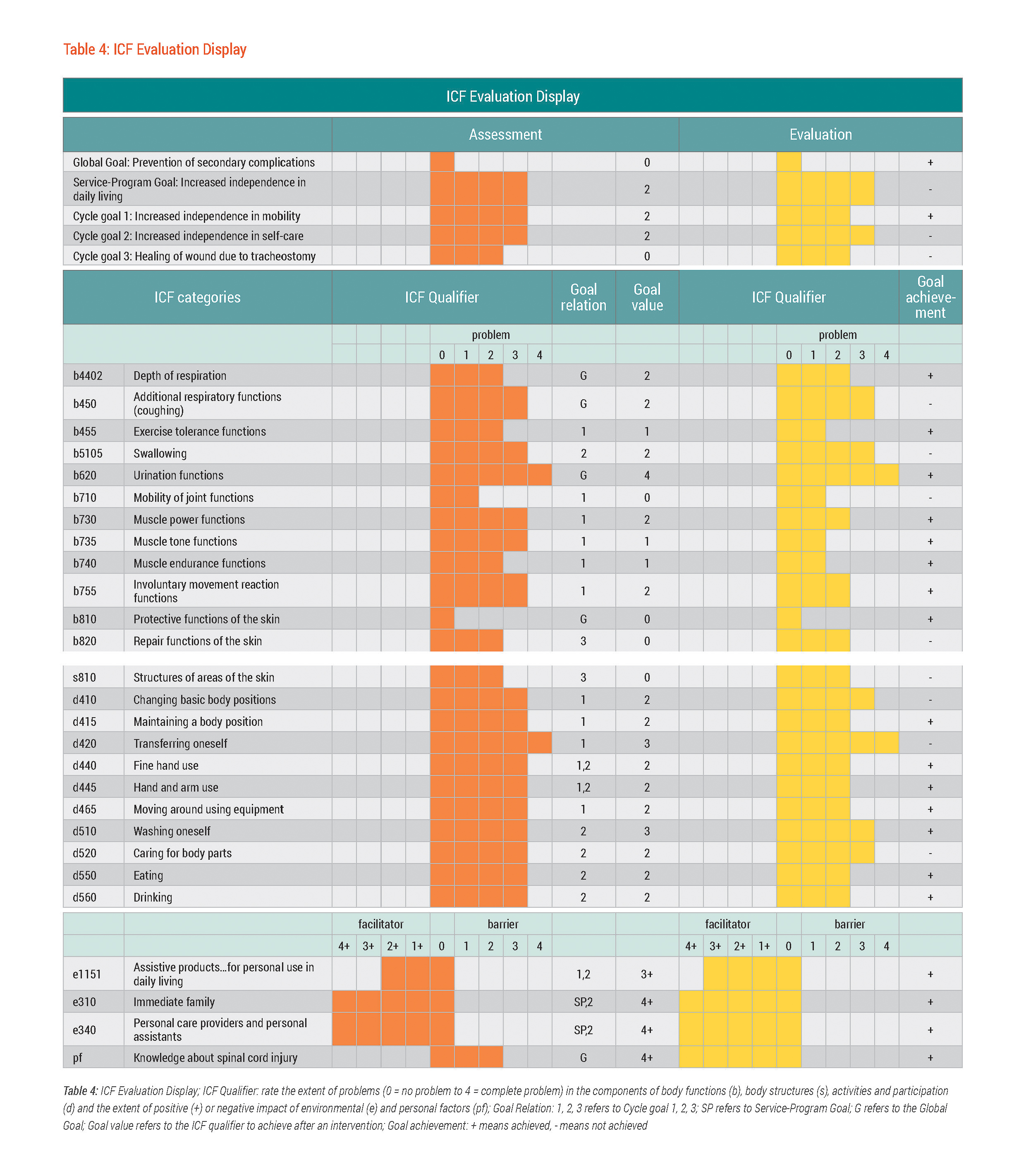Evaluation

The rehabilitation team considered cycle goal 1 (increased independence in mobility) as achieved. Cycle goal 1 was reached despite not meeting the ICF qualifier values set as goals for b710 Mobility of joint functions, d410 Changing basic body positions and b420 Transferring oneself, since Mr. Wun's functioning in these mobility-related targets were maintained, and the goals for the other mobility-related intervention targets were achieved.
Maintaining a sitting position improved due to the movement reaction training.
Mr. Wun's Physical Therapist (PT)
...he can perform compensation techniques for holding objects like...a glass or mobile phone...He is able to write using a hand-stick and U-cuff...although he has limitations in mobility and transportation, he continues to work on the computer. This means he has an income.
Mr. Wun's Occupational Therapist (OT)
Unfortunately, the problem of sub-optimal healing of the tracheostomy incision remained at the end of this Rehab-Cycle®. After consulting with an ear-nose-throat physician, it was decided that surgical closure of the tracheostoma was necessary to alleviate the problem.
Other body function issues like urination functions remained completely impaired. Nevertheless, no further complications, like urinary tract infections or bowel impactions, arose. This in itself was positive, since preventing secondary complications was the main target of the rehabilitation interventions.
With regard to Mr.Wun’s spasticity, the medication treatment with Baclofen and Diazepam was modified, and the spasticity decreased.
The results of the re-assessment/re-evaluation were documented on the ICF Evaluation Display, a visual depiction of the change between Mr. Wun's functioning status (as represented by the intervention targets) before and after intervention, showing whether the goal value set for each intervention target was reached. See table 4. It is important to note that the change shown on the ICF Evaluation Display only indicates that there has been a change, but not whether the change resulted from the interventions provided.

Table 4: ICF Evaluation Display; ICF Qualifier: rate the extent of problems (0 = no problem to 4 = complete problem) in the components of body functions (b), body structures (s), activities and participation (d) and the extent of positive (+) or negative impact of environmental (e) and personal factors (pf); Goal Relation: 1, 2, 3 refers to Cycle goal 1, 2, 3; SP refers to Service-Program goal; G refers to the Global Goal; Goal value refers to the ICF qualifier to achieve after an intervention; Goal achievement: + means achieved, - means not achieved.
In spite of Mr. Wun's increased independence in mobility, the efforts made by him and his rehabilitation team during this Rehab-Cycle® was only able to minimally compensate for the environmental barriers that Mr. Wun faced in his community.
Despite his improvements in mobility, Mr. Wun will continue to have problems with accessibility in his community due to the existing environmental barriers. Unfortunately, we can’t do much about this – even an expensive electric wheelchair is not going to overcome them.
Mr. Wun’s PT